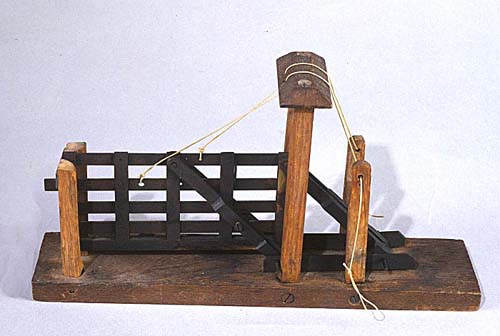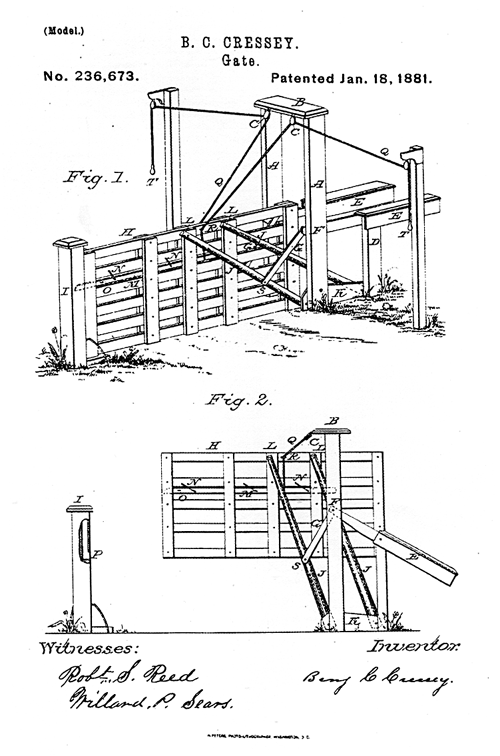Patent Model:
Carriage Gate Mechanism Improvement

In 1880, Benjamin C. Cressey of Collinsville, Illinois, applied for a patent (No. 236,673) on his gate. He sent in his application and a model of his improvement. His purpose was to share his idea with others who might want to build their own. His descendants donated a model of the gate mechanism to the Museum in 1998.
Cressey saw the need of improvement in the type of carriage gate that can be opened by wagon drivers, persons on horseback, of from a load of hay, as well as by pedestrians. Some gate mechanisms involved heavy weights that broke when they hit the ground. His improvement involved

Click to view a diagram of the gate.
"a suitable arrangement of cords and pulleys, in connection with weight-boxes at the back part of the gate, and below the top of the fence, that can be loaded with sand or any heavy substance, whereby the gate can be so nearly balanced that from the central point it will just find its way to the ground, and cannot fall heavily and break to pieces, as this class of tilting gates are so liable to do, and it also makes the action of the heaviest gates very light. It further consists, in combination with cords and pulleys, or a latch or locking device that has no springs or catches to grow weak or be broken by general use and rough handling."
Cressey goes on to describe the operation of the gate:
"Now, as the passenger approaches, the gate is so nearly balanced by weights EE that by a slight pull of the cord at T the latch is drawn back, as shown in Fig. 2, and the gate is thrown open. Then in passing through, a corresponding touch at the other post, T, closes it."







